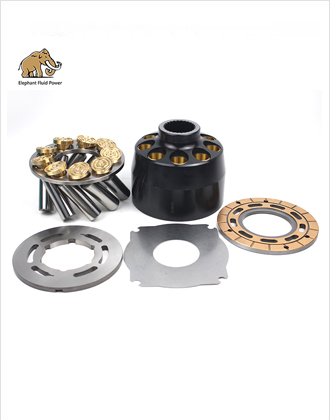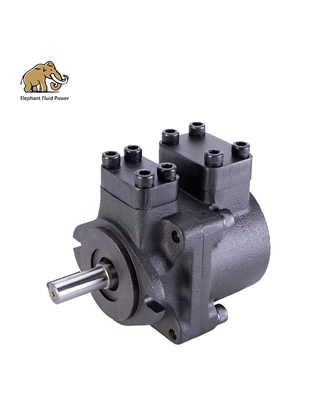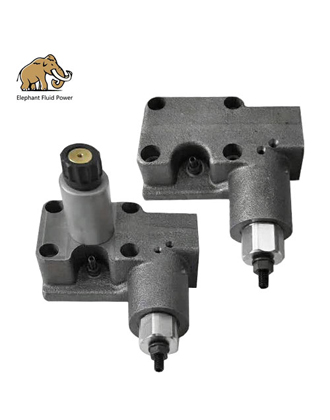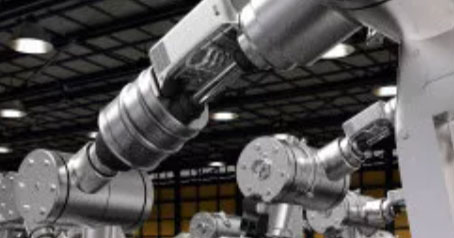Hydraulic systems are at the heart of various industrial and commercial applications, powering heavy machinery, construction equipment, and more. One critical component of hydraulic systems is the hydraulic charge pump, which plays a vital role in maintaining pressure and ensuring smooth operation. In this blog, we'll delve into the fundamental concepts of hydraulic charge pumps, their significance, and their functioning.
Hydraulic Charge Pump: A Key Component
A hydraulic charge pump is a device used to supply fluid to a hydraulic system at a certain pressure. It's often employed in closed-loop systems where a consistent flow of hydraulic fluid is required. The pump serves the purpose of maintaining the system's pressure levels by compensating for fluid leakage and ensuring a constant flow of hydraulic fluid. This is essential for the efficient operation of hydraulic machinery.
Functioning of Hydraulic Charge Pumps
The functioning of a hydraulic charge pump can be broken down into a few key steps. First, the pump draws in hydraulic fluid from the reservoir. This fluid is then pressurized and delivered to the system's main circuit. At the same time, any excess fluid that isn't required by the system is directed back to the reservoir. This continuous cycle ensures that the hydraulic system remains adequately pressurized and properly lubricated.
Importance of Hydraulic Charge Pumps
Hydraulic charge pumps hold immense importance in various industries. They are crucial in preventing cavitation, a phenomenon that occurs when the pressure of a fluid drops to the point where it vaporizes and forms bubbles. These bubbles can collapse with tremendous force, leading to erosion and damage to system components. By maintaining consistent pressure levels, charge pumps help prevent cavitation and ensure the longevity of the hydraulic system.
Types of Hydraulic Charge Pumps
There are several types of hydraulic charge pumps, each with its own unique features and benefits. One common type is the gear pump, which uses meshing gears to create a pumping action. Another type is the vane pump, which employs sliding vanes to generate fluid movement. Both of these pump types are known for their reliability and efficiency in maintaining hydraulic pressure. While hydraulic charge pumps are integral to hydraulic systems, they can face challenges. Excessive heat generation can lead to a drop in pump efficiency and potential system failures. To address this, proper cooling mechanisms and fluid temperature monitoring are essential. Additionally, seal leakage can also impact pump performance. Regular maintenance and inspection can help mitigate these issues.
In conclusion, hydraulic charge pumps are a critical component of hydraulic systems, ensuring consistent pressure levels and optimal system performance. Their role in preventing cavitation and maintaining fluid flow cannot be overstated. As industries continue to rely on hydraulic systems for various applications, the significance of hydraulic charge pumps in ensuring smooth operations remains paramount. Regular maintenance, proper cooling, and an understanding of their functioning are key to maximizing their efficiency and longevity.
 French
French
 Portuguese
Portuguese
 Russian
Russian
 German
German
 Spanish
Spanish
 Japanese
Japanese
 Korean
Korean
 Irish
Irish
 Greek
Greek
 Turkish
Turkish
 Italian
Italian
 Danish
Danish
 Romanian
Romanian
 Indonesian
Indonesian
 Czech
Czech
 Afrikaans
Afrikaans
 Swedish
Swedish
 Polish
Polish
 Basque
Basque
 Catalan
Catalan
 Esperanto
Esperanto
 Hindi
Hindi
 Lao
Lao
 Albanian
Albanian
 Amharic
Amharic
 Armenian
Armenian
 Azerbaijani
Azerbaijani
 Belarusian
Belarusian
 Bengali
Bengali
 Bosnian
Bosnian
 Bulgarian
Bulgarian
 Cebuano
Cebuano
 Chichewa
Chichewa
 Corsican
Corsican
 Croatian
Croatian
 Dutch
Dutch
 Estonian
Estonian
 Filipino
Filipino
 Finnish
Finnish
 Frisian
Frisian
 Galician
Galician
 Georgian
Georgian
 Gujarati
Gujarati
 Haitian
Haitian
 Hausa
Hausa
 Hawaiian
Hawaiian
 Hebrew
Hebrew
 Hmong
Hmong
 Hungarian
Hungarian
 Icelandic
Icelandic
 Igbo
Igbo
 Javanese
Javanese
 Kannada
Kannada
 Kazakh
Kazakh
 Khmer
Khmer
 Kurdish
Kurdish
 Kyrgyz
Kyrgyz
 Latin
Latin
 Latvian
Latvian
 Lithuanian
Lithuanian
 Luxembourg
Luxembourg
 Macedoniar
Macedoniar
 Malagasy
Malagasy
 Malay
Malay
 Malayalam
Malayalam
 Maltese
Maltese
 Maori
Maori
 Marathi
Marathi
 Mongolian
Mongolian
 Burmese
Burmese
 Nepali
Nepali
 Norwegian
Norwegian
 Pashto
Pashto
 Persian
Persian
 Punjabi
Punjabi
 Serbian
Serbian
 Sesotho
Sesotho
 Sinhala
Sinhala
 Slovak
Slovak
 Slovenian
Slovenian
 Somali
Somali
 Samoan
Samoan
 Scots Gaelic
Scots Gaelic
 Shona
Shona
 Sindhi
Sindhi
 Sundanese
Sundanese
 Swahili
Swahili
 Tajik
Tajik
 Tamil
Tamil
 Telugu
Telugu
 Thai
Thai
 Ukrainian
Ukrainian
 Urdu
Urdu
 Uzbek
Uzbek
 Vietnamese
Vietnamese
 Welsh
Welsh
 Xhosa
Xhosa
 Yiddish
Yiddish
 Yoruba
Yoruba
 Zulu
Zulu







